Retro Replay Review
Gameplay
The core of Dark Signs lies in its intricate hacking mechanics, where you assume the role of a skilled netrunner tasked with infiltrating a web of simulated servers. Early missions guide you through the basics of network scanning, port enumeration, and vulnerability analysis, setting the stage for more complex operations. Each assignment feels like a small puzzle: will you brute-force your way in, or craft a targeted exploit based on subtle software flaws?
(HEY YOU!! We hope you enjoy! We try not to run ads. So basically, this is a very expensive hobby running this site. Please consider joining us for updates, forums, and more. Network w/ us to make some cash or friends while retro gaming, and you can win some free retro games for posting. Okay, carry on 👍)
One standout feature is D-SCRIPT, the in-game scripting language that gives you a sandbox to automate repetitive tasks or develop bespoke tools. Novice players can rely on built-in command libraries, while veterans will delight in customizing scripts to streamline their workflow. The moment your first homemade decryption routine runs successfully, you’ll appreciate how Dark Signs rewards creative problem-solving.
Progression in Dark Signs is organic and challenging. As you chart new servers, the game introduces simulated online communities and newsgroups where you can research zero-day exploits or discuss emerging security holes. Rather than handing you solutions, these forums offer cryptic clues, making each breakthrough feel earned.
Assignments steadily ramp up in complexity, requiring you to combine techniques learned earlier—whether chaining exploits, bypassing multi-factor authentication, or reverse-engineering custom protocols. By the endgame, even veteran players will find themselves drafting elaborate D-SCRIPT macros and juggling multiple attack vectors simultaneously, keeping the gameplay fresh and demanding.
Graphics
Dark Signs opts for a minimalist, text-based interface that evokes classic hacking simulators. Rather than flashy visuals, the game uses clean, monospaced fonts and color-coded terminal windows to distinguish between command prompts, logs, and script editors. This stripped-down style enhances immersion, making you feel as if you’re peering directly into a real hacker console.
The use of ASCII art and simple GUI panels for system maps and network topologies underscores the retro aesthetic. While there are no high-resolution textures or 3D environments, the carefully designed layout ensures that critical information—open ports, process lists, security logs—is always at your fingertips. Clarity and readability take precedence over visual flair.
Subtle visual cues, such as blinking cursors to indicate active processes or color shifts to highlight intrusion alerts, add tension to each hacking session. These touches serve as vital feedback, helping you track your progress through layers of security measures. The result is an interface that feels alive without overwhelming you with unnecessary graphics.
Overall, the graphical design of Dark Signs is a masterclass in functional minimalism. It may not appeal to those craving high-octane visuals, but for enthusiasts of simulation and cyberpunk lore, the interface perfectly complements the game’s strategic depth and narrative tone.
Story
Although Dark Signs focuses primarily on its hacking mechanics, it weaves a compelling narrative through mission briefings, intercepted communications, and in-game newsfeeds. You play an anonymous freelancer hired by shadowy corporations, freelance consortia, and underworld syndicates—all with their own agendas. This nebulous world-building keeps you guessing about who can be trusted.
Each assignment adds another layer to a broader conspiracy involving data brokers, corporate espionage, and digital warfare. Side-missions, such as retrieving personal records or sabotaging rival networks, reveal personal stakes and ethical quandaries. These narrative threads encourage you to ponder the morality of your virtual exploits.
As you progress, you uncover fragments of a larger storyline: leaked files about clandestine government AI programs, rumors of an emergent self-replicating worm, and hints that someone else is watching your every move. The gradual reveal keeps tension high, transforming each hack from a rote labor to a page in a high-stakes thriller.
Dark Signs excels at letting you infer context from sparse data, rewarding players who piece together clues across multiple missions. While not every subplot reaches a dramatic conclusion, the overall sense of a shadow war unfolding in the digital underbelly is deeply engaging.
Overall Experience
Dark Signs delivers a richly textured hacking simulation that balances realism with accessibility. The learning curve is steep at first, especially if you’re new to command-line interfaces or scripting languages. However, generous in-game hints and a well-structured tutorial system ensure you’re never left completely adrift.
The game’s pacing is deliberate: it encourages you to slow down, analyze system configurations, and methodically plan your moves. This emphasis on thoughtful strategy makes each successful breach deeply satisfying. Save for a few particularly punishing missions, the steady progression keeps frustration in check.
Community resources, from online walkthroughs to user-created D-SCRIPT libraries, extend the game’s longevity and creativity. If you enjoy tinkering with code or collaborating on exploit strategies, you’ll find a welcoming niche among fellow Dark Signs players.
Whether you’re a cybersecurity enthusiast, a puzzle lover, or simply seeking a cerebral challenge, Dark Signs offers a uniquely immersive experience. Its blend of strategic depth, narrative intrigue, and minimalist presentation makes it a standout choice for anyone intrigued by the art and ethics of digital infiltration.
 Retro Replay Retro Replay gaming reviews, news, emulation, geek stuff and more!
Retro Replay Retro Replay gaming reviews, news, emulation, geek stuff and more!
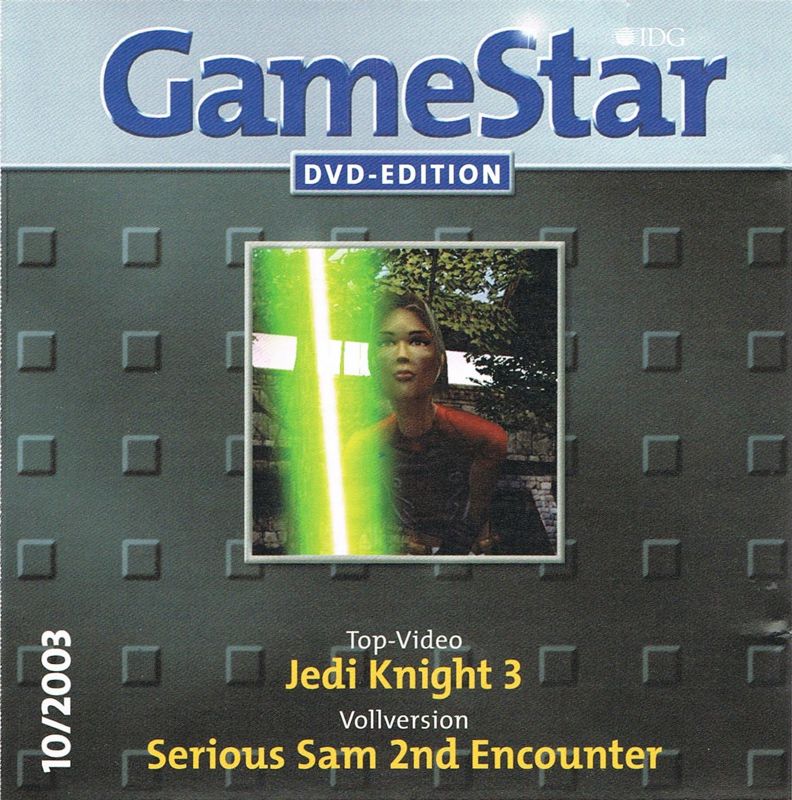
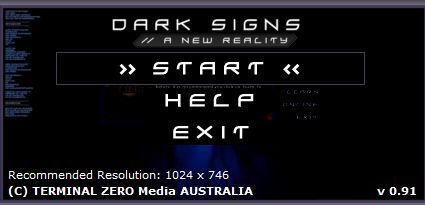
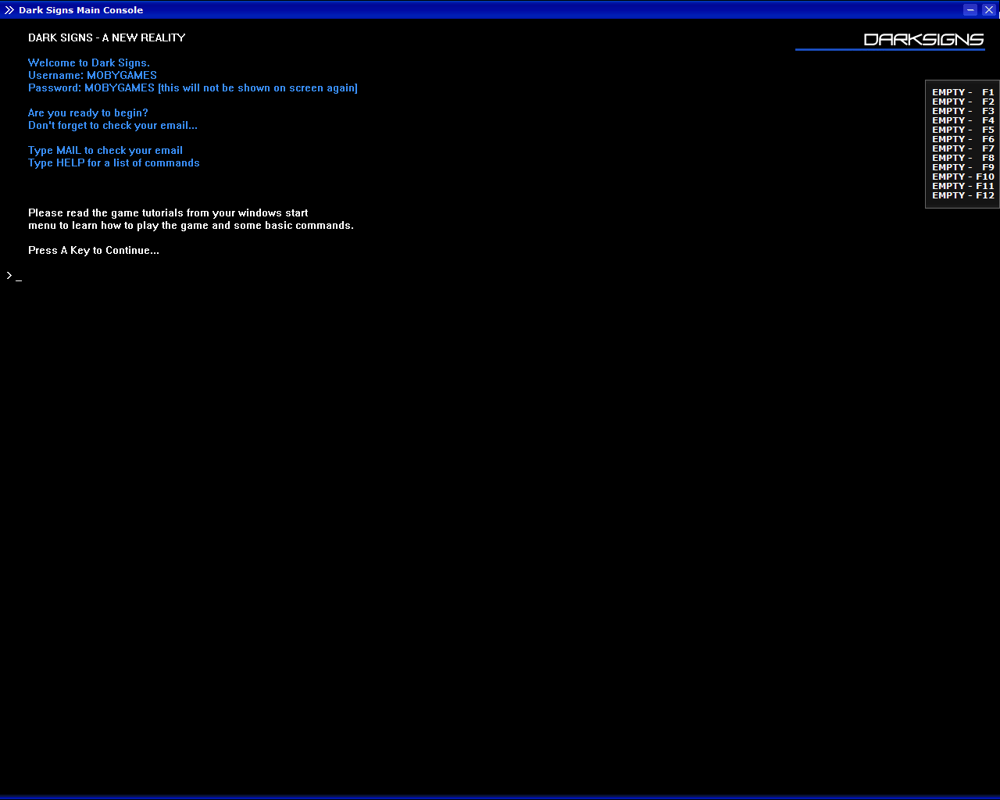
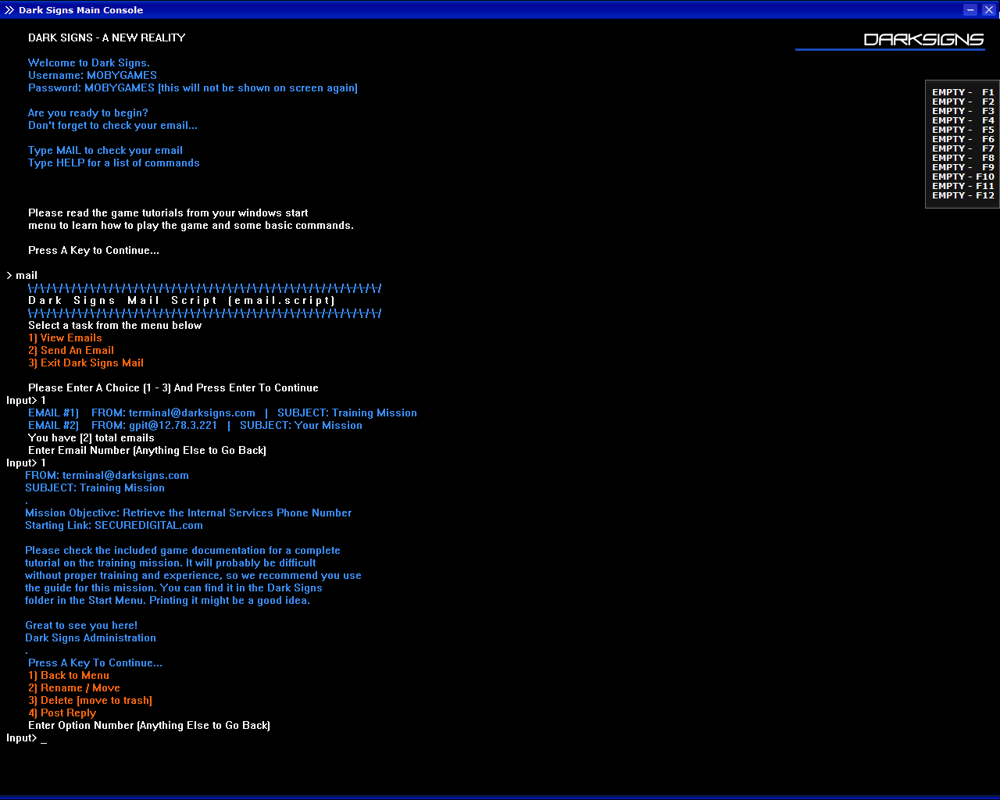
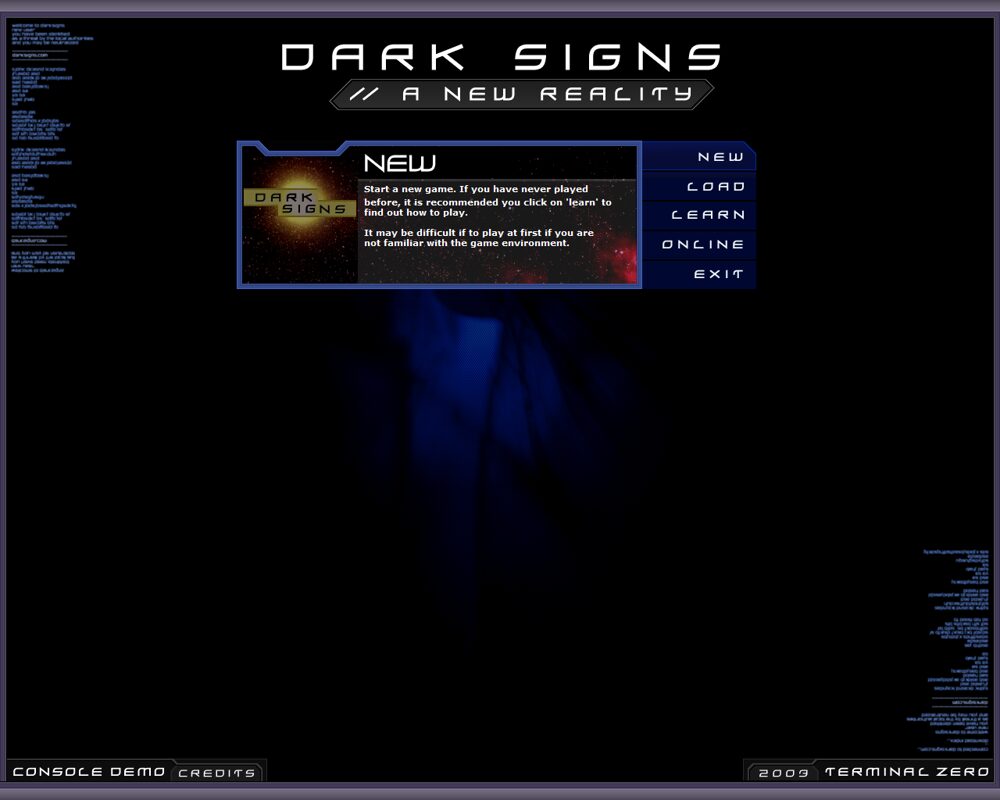



Reviews
There are no reviews yet.